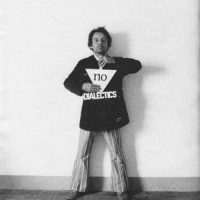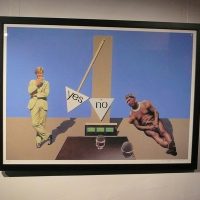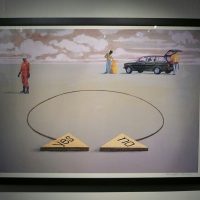Maybe the end of European art is similar to the beginning of Chinese philosophy in the sense that the last avant-garde movement has reached the point where only the indication of the basic principles is left. Artists have refused all the usual types of representation, moreover they denied the expressions of abstract art too, and started to express their thoughts using only a few signs and words. Thus the audience had to use their erudition and phantasy, since the reception of art has changed too: the passive joy of aesthetic beauty has changed to the more complex joy of recognition: it was the viewer who completed the artwork by interpreting the laconic signs according to his/her intellectual and emotional world.
The fashionable trend of using word and picture-enigmas became an international movement that culminated in the 1960-s and 70-s and was called Concept Art. It had a more popular branch that was well known in the alternative circles. It was called Mail Art, which used those qualities of Concept Art that made it easy to send them by post: they could be small enough to fit in an envelope, they could be cheaply multiplied, and it also didn’t cost much to post them. This Mail Art network connected artists from all over the world, thus it can be seen as the ancestor of the internet that transmitted only experience of art.
Geza Perneczky’s Yes-No Art conception was made in Köln from 1972 to 1974 during the high school classes he held. He used the cardboards he got from his students and some spare coloured prints left in the classroom. The works were originally made by collage and gouache technique. The antecedent of this series was Perneczky’s YES and NO rubber stamps he made in 1972 joining the international Mail Art movement. He tried to enlarge this to a „world symbol” and imagined monumental actions, so huge, that it would have moved the countries and even the continents. This project couldn’t come true of course, and only the students could examine the transition of the colourful photos to painted details „as everything would be real”. The works were put in a wardrobe and only one decade later were they taken out when electro-print reproductions were made of them.
On the exhibition Perneczky’s other experiments of the Yes-No idea from the beginning of the 1970-s are represented: photos, prints are completing the collages. In addition kArton gallery has published a catalogue of the exhibition with Mónika Zombori’s study to complete our understanding of Géza Perneczky’s art.



